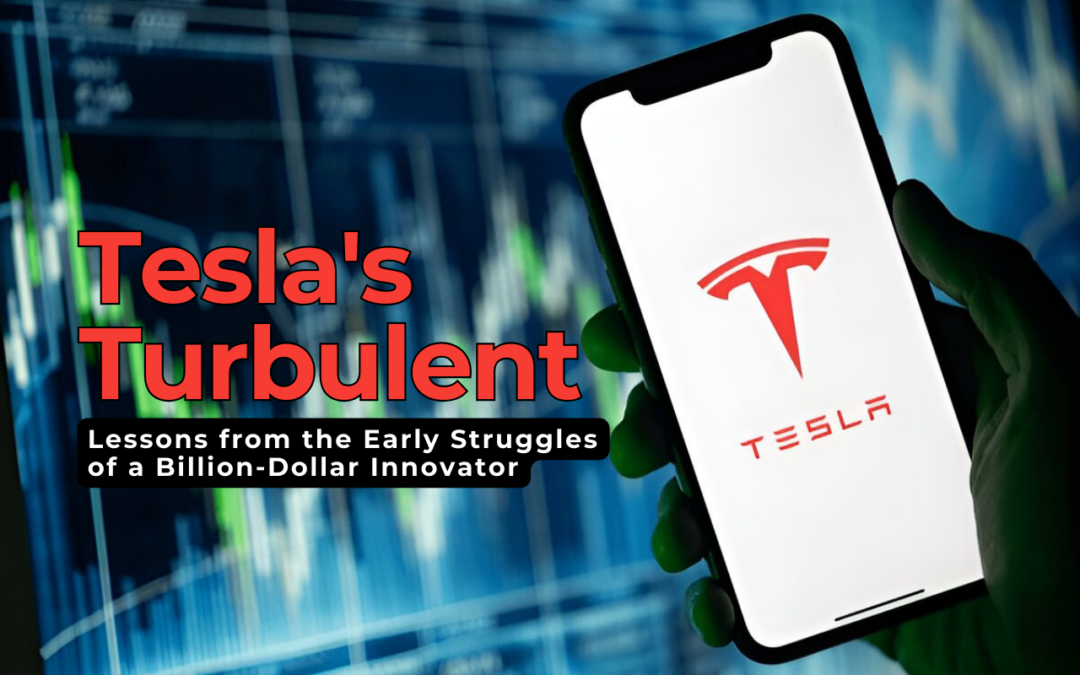In the world of business, Tesla Inc. is synonymous with innovation, disruption, and success. With a market capitalization that has touched astronomical heights, Tesla has revolutionized the automotive and energy industries under the leadership of its enigmatic CEO, Elon Musk. However, the path to becoming a trillion-dollar innovator wasn’t paved with gold from the start. Tesla’s journey was fraught with financial challenges, technical hurdles, production delays, and skepticism from industry insiders. For entrepreneurs and business enthusiasts, the early struggles of Tesla offer a masterclass in resilience, adaptability, and the sheer power of vision.
Here, we unpack Tesla’s turbulent early years and the lessons that can help aspiring entrepreneurs navigate their own challenges.
The Birth of a Bold Vision
Founded in 2003 by Martin Eberhard and Marc Tarpenning, Tesla’s mission was clear from the outset: to accelerate the world’s transition to sustainable energy. At a time when electric vehicles (EVs) were dismissed as impractical and niche, Tesla’s goal seemed audacious, even foolhardy. The early 2000s were dominated by gas-guzzling SUVs, and the EV market was minuscule, with players like GM’s EV1 failing to make a dent.
The turning point came in 2004 when Elon Musk, a successful entrepreneur with PayPal under his belt, joined Tesla as its primary investor and chairman of the board. Musk brought not only capital but also an unrelenting drive to make Tesla’s vision a reality. Despite his commitment, the road ahead was anything but smooth.
Early Struggles: Financial and Operational Woes
1. The Roadster’s Rocky Journey
Tesla’s first vehicle, the Roadster, was a daring project. Based on the Lotus Elise chassis, the Roadster was meant to shatter the stereotype of EVs being sluggish and unappealing. It promised a range of over 200 miles per charge and acceleration that could rival sports cars. However, bringing the Roadster to life proved to be a Herculean task.
From 2005 to 2008, Tesla faced a slew of challenges:
- Cost Overruns: Initial estimates pegged the Roadster’s development cost at $25 million. By the time the first cars were delivered in 2008, costs had ballooned to over $140 million.
- Technical Challenges: Building an EV with groundbreaking performance metrics meant pushing the boundaries of existing technology. Tesla grappled with battery overheating issues, transmission failures, and production inefficiencies.
- Missed Deadlines: Originally slated for a 2006 launch, the Roadster’s release was delayed multiple times, straining relationships with suppliers and investors.
2. Financial Turbulence
By 2008, Tesla was on the brink of bankruptcy. The global financial crisis had dried up funding opportunities, and the company was burning through cash at an alarming rate. Musk had to step in with his own money, investing $40 million of his dwindling personal fortune and securing emergency funding to keep Tesla afloat.
3. Leadership Challenges
Tensions within Tesla’s leadership further complicated matters. Disagreements between Musk and Eberhard over strategy and execution led to Eberhard’s departure in 2007. Musk’s takeover as CEO marked a turning point but also placed immense pressure on him to deliver results.
Turning the Tide
Despite these obstacles, Tesla managed to survive its turbulent early years. The Roadster, while not a commercial success in the traditional sense, achieved its purpose: proving that EVs could be high-performance, desirable, and feasible. By 2010, Tesla’s successful IPO raised $226 million, giving the company the financial runway it needed to scale its operations.
Key strategies played a pivotal role in Tesla’s recovery and growth:
1. Focus on Innovation
Tesla’s commitment to pushing technological boundaries became its biggest strength. The company developed proprietary battery technology, energy-efficient powertrains, and advanced software systems, setting it apart from traditional automakers.
2. Vertical Integration
Unlike most car manufacturers that rely heavily on suppliers, Tesla adopted a vertically integrated model. This allowed the company to control critical components like batteries and software, ensuring better quality and cost efficiency.
3. Strategic Storytelling
Musk’s ability to articulate Tesla’s mission inspired investors, employees, and customers alike. By positioning Tesla as a pioneer in the fight against climate change, Musk turned the company into a movement rather than just a business.
Lessons for Entrepreneurs
Tesla’s early struggles offer invaluable insights for anyone embarking on a business journey:
1. Vision Trumps Short-Term Failures
Tesla’s turbulent vision of a sustainable future kept the company going even during its darkest hours. Entrepreneurs should anchor their businesses in a compelling vision that can weather short-term setbacks.
2. Adaptability is Key
The ability to pivot and adapt is crucial. Tesla’s turbulent decision to focus on the high-end market with the Roadster before scaling to mass-market vehicles like the Model S and Model 3 exemplifies strategic flexibility.
3. Embrace Risk
Starting a business often means venturing into uncharted territory. Tesla’s turbulent willingness to take risks with groundbreaking technology and unconventional strategies paid off in the long run.
4. Resilience in the Face of Adversity
Every entrepreneur faces moments of doubt and despair. Tesla’s survival through financial crises and operational challenges underscores the importance of resilience and persistence.
5. Invest in Innovation
Continuous innovation is a cornerstone of long-term success. By prioritizing R&D and pushing the envelope, Tesla maintained its edge over competitors.
6. Build a Strong Narrative
A compelling story can rally stakeholders around your mission. Musk’s ability to communicate Tesla’s purpose played a significant role in attracting investors and customers.
The Ripple Effect
Today, Tesla’s turbulent impact extends far beyond the automotive industry. The company’s success has:
- Sparked a Global EV Revolution: Legacy automakers like Ford, GM, and Volkswagen are now investing billions in EV development, thanks in part to Tesla’s trailblazing efforts.
- Disrupted the Energy Sector: Tesla’s innovations in battery technology and renewable energy storage have reshaped the energy landscape.
- Inspired a New Generation of Entrepreneurs: Tesla’s journey has become a case study in bold thinking and relentless execution.
Conclusion: From Struggles to Stardom
Tesla’s turbulent early years were a rollercoaster of challenges, but they laid the foundation for its meteoric rise. For entrepreneurs, the company’s story is a testament to the power of vision, innovation, and resilience. While the path to success is rarely smooth, those who persevere—like Tesla—can transform industries and change the world.
As Musk himself once said, “If something is important enough, even if the odds are against you, you should still do it.” Tesla’s journey proves that those willing to embrace uncertainty and persist through adversity can achieve extraordinary outcomes.












